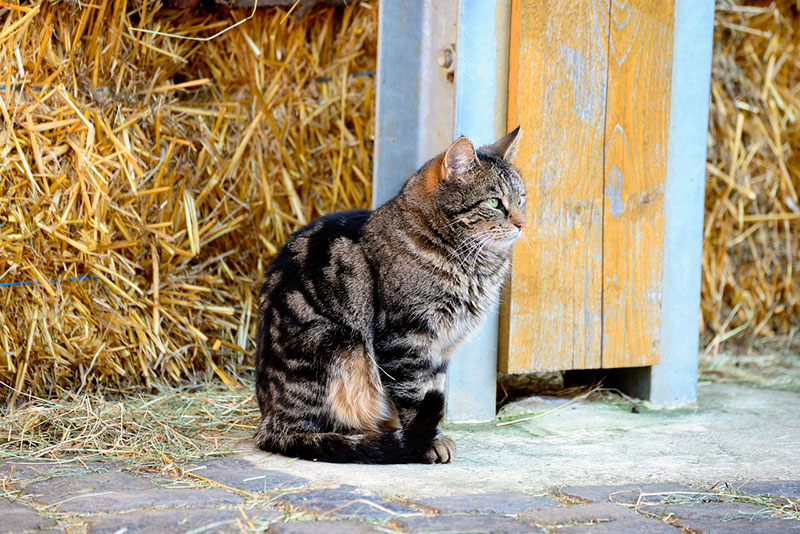Cats are one of the cutest and most common animals in the world. They are loved for their affectionate and independent nature, unique behavior, and just because they are so adorable. They boast a rather ancient and fascinating history and have raised numerous questions among animal enthusiasts. Scientists from various fields have spent years seeking information related to our furry companions. Let's explore the results of their work.

It is believed that they descended from the African wildcat, which was domesticated by early farmers.
This occurred around 7500-7200 BCE.
Most scientists consider the cat to be a semi-domesticated animal, bearing close resemblance to its wild ancestors. But it is a subject of scientific debate.
In 2021, there were approximately 220 million domestic cats and 480 million stray cats on Earth.
According to various sources, the number of cat breeds ranges from 43 to 71. It can depend on classification and breed recognition by different cat breed registries.
The common domestic cat, Felis catus, is the only domesticated representative of a relatively extensive family.
Most likely, the modern domestic cats descended from the African wildcat. Supporting this theory is the fact that they are genetically very close. Moreover, they can interbreed, a fact regularly observed by scientists and casual observers.
This discussion pertains to domestic cats. They were domesticated in the Near East around 75-72 centuries BCE. This was not a random event but a result of the success of agriculture, which led to food stores, including grains and other natural resources. Now, humans faced the serious challenge of protecting their food supplies from rats and mice. These rodents not only threatened to spoil all the provisions, leaving people without food, but also carried dangerous diseases.
Cats quickly noticed the abundance of rodents near human settlements. Why roam over large territories in pursuit of a mouse for dinner when you can simply hang around human settlements, and the rodents will come to you? People also benefitted as cats defended their grain stores without demanding anything in return. Thus, a strong human-cat connection was formed, which has lasted for almost 10,000 years.
For many, this question may provoke laughter or bewilderment. How can a cat be a wild animal when, for thousands of generations, they have been born, lived, and died in human homes and apartments?
However, not all scientists agree that cats are domestic animals. Consider a dog for comparison. They have lived with humans for about 20,000 years, acquiring valuable skills for interaction with their owners. At the same time, they have lost some of the traits their wild ancestors possessed. As a result, modern dogs cannot survive effectively in the wild. In contrast, cats can. If you release a few cats into a wild forest, where they can survive and reproduce, within a few generations, their kittens will not differ significantly from their wild relatives. They will perceive humans as a threat, not as protectors. Of course, there are some differences between domestic and wild cats, but these are about ten times fewer than the differences between domestic dogs and their wild ancestors.
Therefore, many scientists believe that it is more accurate not to classify cats as either of these categories but to consider them as semi-domesticated animals.
Accurately counting their number is virtually impossible; there will always be a significant margin of error. Nevertheless, statistical experts estimate that as of 2021, there were approximately 700 million cats in the world. Of these, only 220 million were domestic, while a staggering 480 million were strays.
In Russia, as of 2020, there were nearly 41 million cats, surpassing even dogs, which numbered 22.6 million. In the United States, the situation is different. Around 60-100 million cats reside there, but they are still the second most popular and widespread domestic pets. Around 25.4% of households in America own cats.
These cats are believed to have originated in Siam, now known as Thailand, which is the source of their name. Siamese cats are one of the oldest and most recognized cat breeds in the world. Siamese cats are known for their striking blue almond-shaped eyes and distinctive coat coloration. The Siamese cat's unique appearance is characterized by a cream or fawn-colored body with darker "points" on the ears, face, paws, and tail. This color pattern is a result of a temperature-sensitive enzyme that affects the production of pigment in their fur.
These cats were held in high regard in Siam and associated with royalty and spirituality. They were introduced to the Western world in the late 19th century when they quickly gained popularity for their striking appearance and engaging personalities.
Many animal enthusiasts are intrigued by this question. Sphynx cats appeared relatively recently, just 50 years ago. In fact, most cat breeds do not have a long history. Creating hairless cats became possible due to a natural mutation known as hr, which results in the absence of fur. This mutation is recessive, meaning that if one of the cats in a pair has this mutation and the other does not, the kittens will likely have fur. However, breeders successfully established this mutation, making the likelihood of furry kittens minimal when breeding purebred Sphynx cats.
References: Links and sources